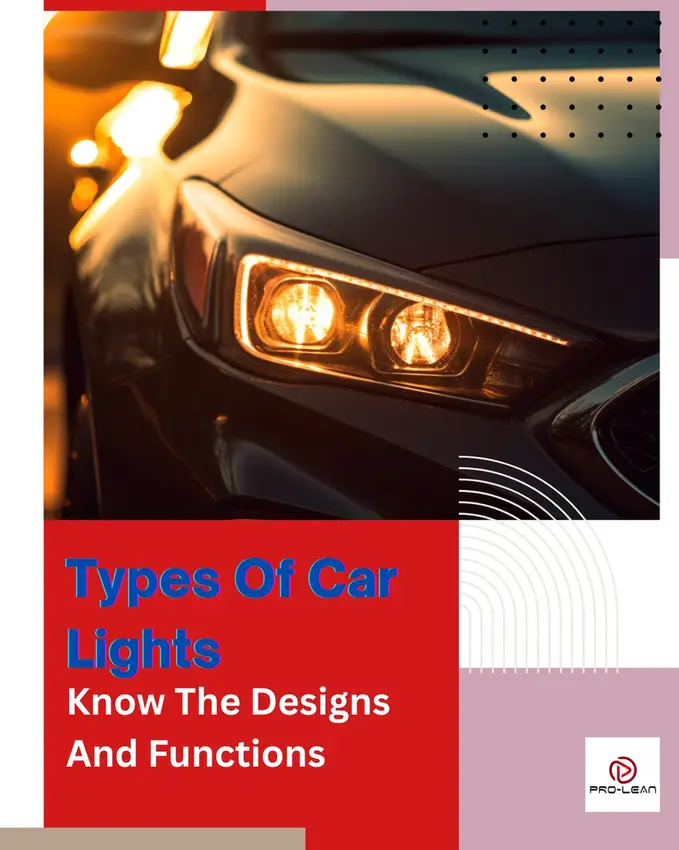
Types of car lights
Some people may think that ‘types of car lights’ is a straightforward topic, but it is critical to know the types of lights in a car, their functions, and how best to use them. It is even better to understand how they are made, especially if you are into the car lights reselling or installation business.
As a core part of a car, lights serve not only as illumination but also as an effective means of communication. Each of the lights has its functions, capabilities, and limits. The list is long: Brake lights, daytime running lights, fog lights, hazard lights, and headlights. Others are reverse lights, taillights, turn signal lights, and car inner lights.
Read the rest of the article for a thorough coverage of types of car lights, their functions, and manufacturing approaches, and to see how CNC machining services can help.
Exterior Car Lights
The most recognizable types of car lights are the exterior ones, whose functions revolve around driving safety and visibility. You can request a fast & free quote for any of the following lights.
Brake Lights
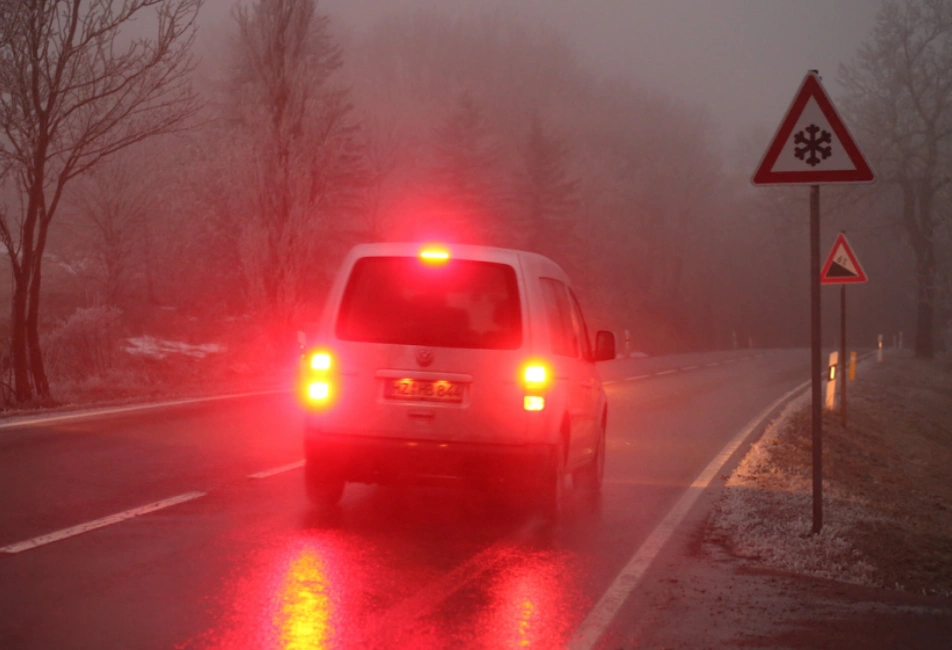
Brake lights
These lights are placed at the rear of the vehicle. Their function is to alert other drivers that the car is slowing down or coming to a stop. Brake lights only come on when the driver steps on the brakes, so there is not much thought about when they should be on or not.
Daytime Running Lights
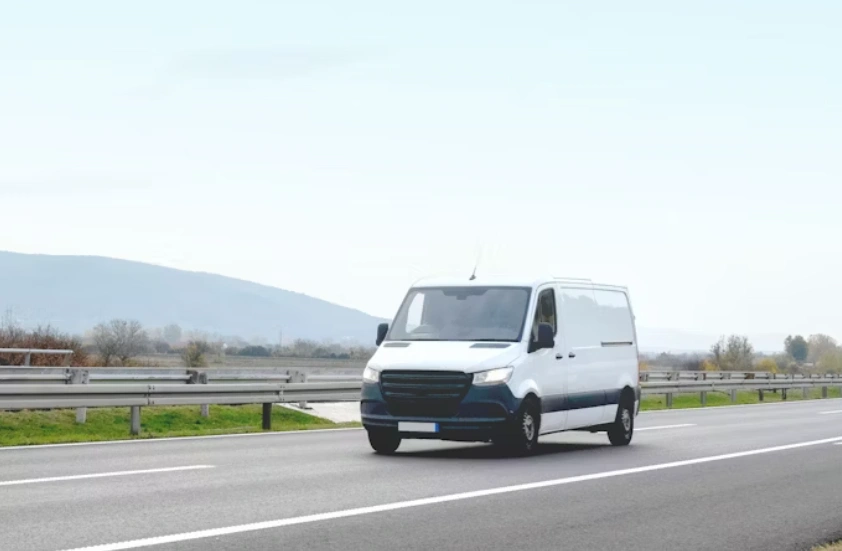
Daytime running lights
Sometimes mistaken for low beams, these lights increase visibility to other drivers. The lights are typically on the front and rear, and can come on whenever the engine is running. Local requirements regarding the use of these lights differ from region to region, but modern cars are normally customized to adhere to them.
Fog Lights
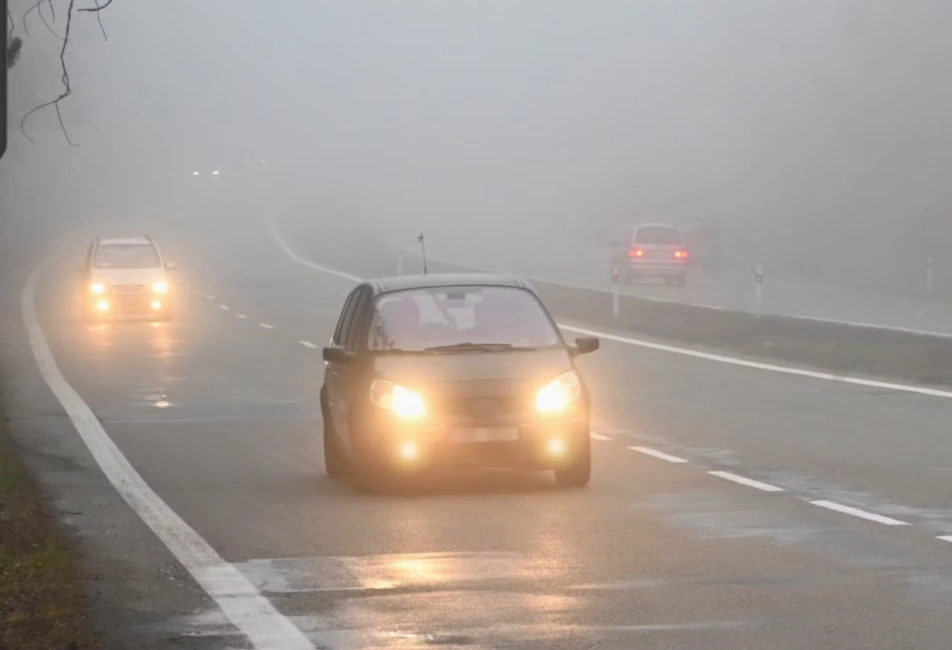
Fog lights
Fog lights are a perfect complement to standard lights when adverse conditions such as snow and fog occur. They are specially placed and their beam design is such that light diffusion is as minimal as possible. Fog lights are often left to shine low onto the road without flashing.
These lights are undoubtedly key in driving safety, especially in challenging weather. With a clear vision of the road ahead, the driver can easily see obstacles and other traffic.
Hazard Lights
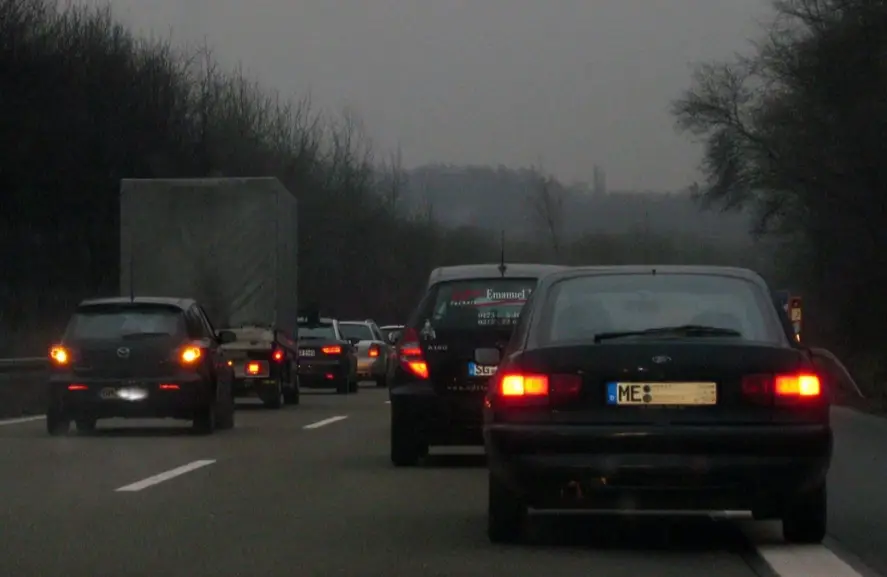
Hazard lights
Flashers or hazard lights are an adjustment to the signal lights in the sense that all signal lights flash on and off. Their purpose is to warn other motorists and road users of a traffic problem. It could be a broken-down car, slower-than-usual traffic, or an accident.
When the four turn signal lights are flashing, the car is more visible when the said and related road issues occur. Proper use of these lights is highly recommended to prevent confusion.
Headlights
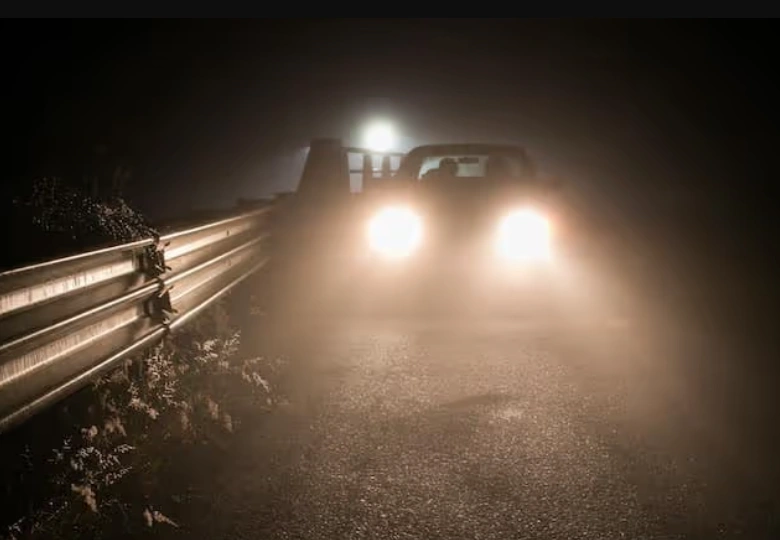
Headlights
Headlights are the front illuminators for the car, and are easily the most important for most cars. Like the fog lights, headlights help the driver see the road clearly and get noticed by other drivers.
Headlights can be high-beam or low-beam types. High-beam headlights are extremely bright and can easily blind oncoming drivers. They should only be used when there is no oncoming traffic and in extreme darkness.
Low-beam headlights are the most suitable for nighttime driving in traffic because they do not glare at other drivers.
Reverse Lights
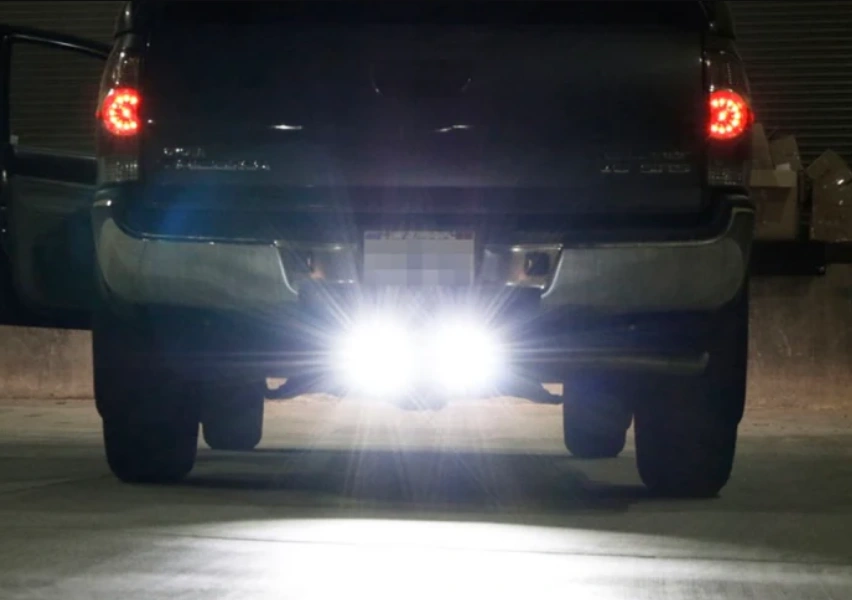
Reverse lights
Reverse lights or backup lights come on when the reverse gear of a car is engaged. They play at least two functions: Warning others that the car is backing up and providing lighting when the car is backing up.
The standard color of reverse lights is white for the same reasons. White is easy to spot, and it provides the best illumination.
Like the other lights, reverse light designs are diverse. Some cars come with a single reverse light located on one of the sides, while others have two lights. Some jurisdictions, for example, the US, require cars to have two backup lights.
These lights have a limited range – about 10 meters – but this is mostly sufficient for backing up.
Taillights
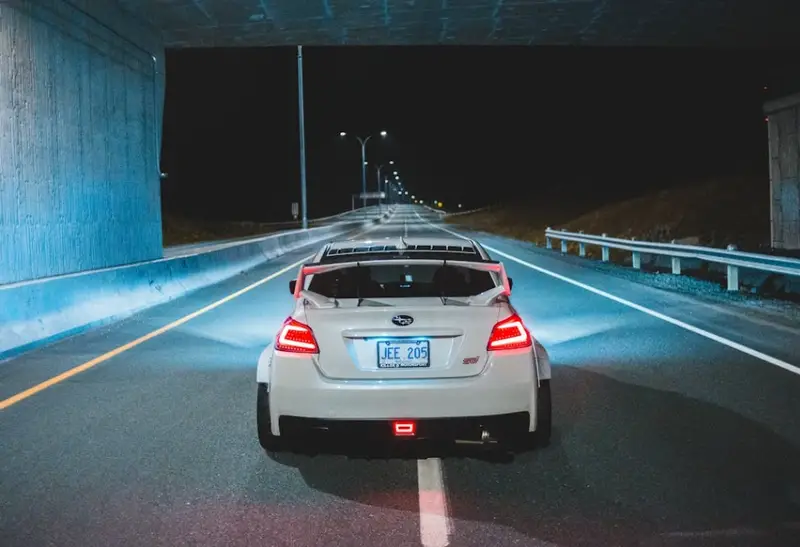
Taillights
Taillights are red lights at the car’s rear that are perpetually on when the headlights are on. Taillights will also come on automatically in some cars during low visibility. These lights share an assembly with brake lights, but they function independently.
Functional taillights are a legal requirement in many countries, with malfunctioning attracting fines. Therefore, drivers are expected to regularly inspect these lights.
Turn Indicator Lights
Turn indicator or signal lights are amber or red lights that the driver switches on when changing lanes, exiting the road, pulling over, or overtaking other cars. The main function of these lights is to minimize confusion to other road users when doing such things.
Interior Car Lights
Finally, there are special types of car lights for the interior, which provide safety and comfort to the occupants. These include accent lights for ambience and functional lights.
The range of types of interior lights in modern cars is staggering – satellite navigation, dashboard lights, door lights, mirror lighting, dome lights, infotainment, puddle light, licence plate light, reading lights, footwell lights, glovebox light, and others.
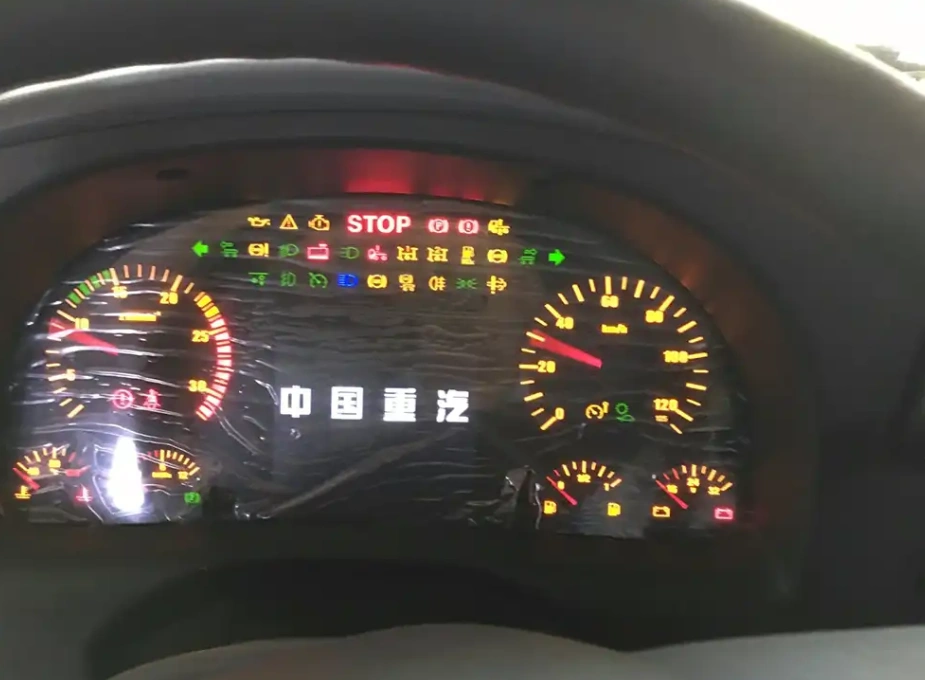
Dashboard lights
Interior car lights are an aesthetic playground for designers with many car interior lighting ideas offering extensive customization options.. Whether the driver desires a calm, relaxed atmosphere or increased illumination for reading, so much can be achieved with custom interior car lights.
Try Prolean Now!
Upgrading Or Customizing Car Lights? What To Know
When upgrading, customizing, or replacing car lights with better, modern technology, it is important to outline the exact reasons behind the change. Is it better visibility or aesthetics?
Many drivers upgrade the types of car lights, including the types of lights on a car dashboard and instrument panel lights, for enhanced safety and user experience, a reason why options like daytime running light strips are increasingly popular. Regarding safety, these lights make the car more visible, even under very bad weather conditions.
Professional upgrades are also focusing on underbody lights and wheel lights to give cars more personality. These types of car lights are particularly effective in enhancing a car’s visibility at night, thereby enhancing safety.
Note also that for both exterior and interior types of car lights, the CNC machining complete guide is one of the important resources during the selection process.
That said, the following ideas can enhance the car lights upgrade project:
-
Balance Strength And Heat Resistance For Car Lights Materials
The choice of material for the car lights is critical because it determines important elements such as strength and durability. From toughened nylon housings to polycarbonate lenses, the right car light material can make a lot of difference in a car light project.
Many light components may use advanced plastics, but metal components are still instrumental in the systems due to their advantages, such as corrosion resistance, ease of manufacturing, and others captured in the guide to metal auto parts & ongoing trends.
Such materials are designed with strength-to-weight ratio and durability in mind. They may appear pricey now, but the return on investment is evident after years of flawless performance.
-
Consider Prototyping Before Final Manufacturing
The design and manufacturing cycle of different types of car lights is perfect if it involves a prototyping process. A lot of assembling, molding, and overmolding is common in car light manufacturing.
Just as precision machining is critical for engine components like cylinder head machining, the same focus applies to automotive lighting systems.
When the different parts are prototyped, assembled, and tested, it offers the chance to develop the perfect car light.
-
Insist On Precise Production
Automotive parts, including lights, are best sourced from manufacturers renowned for high precision, an element that guarantees conformance to user requirements. Whether it’s plastic injection molding or CNC machining, the production process for different types of car lights should meet the highest tolerances and dimensional accuracies.
In the guide about how motor shafts are made and why they matter, precision machining is emphasized. The same exacting standards apply to car light manufacture to ensure reliable performance and durability.
-
Integrate Designs With Modern Tech
Integrating the latest technology with lighting designs is now the norm; the era of simple bulbs for headlights and taillights is now gone. Adaptive Lighting Systems, ambient lighting for car interiors, and light-emitting diode (LED) are some relatively new lighting technologies that every provider of car lights should take into account.
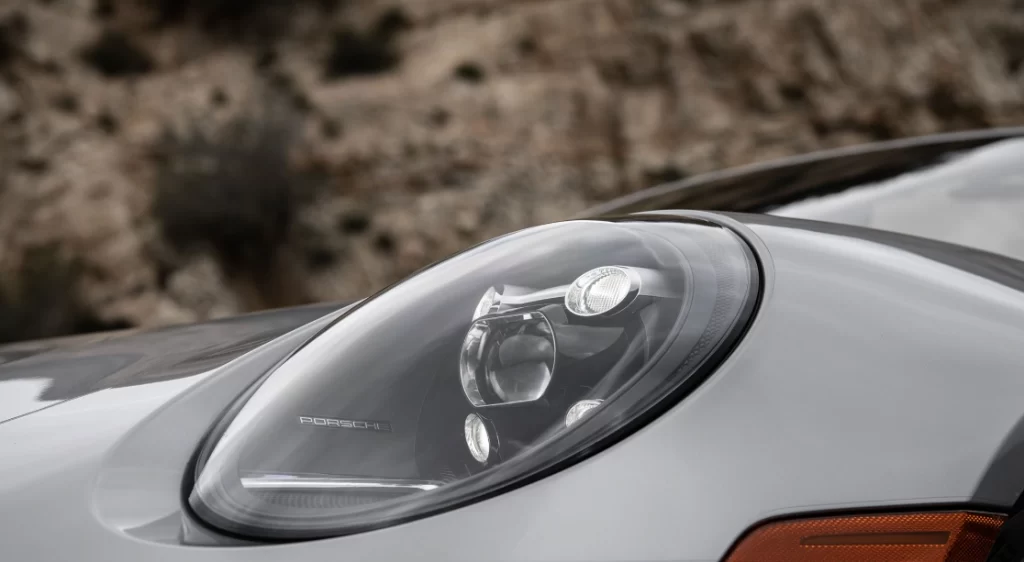
Adaptive lighting
Modern automotive transmission shaft use modern tech, for instance, in output modification. The same approach is evident in other vehicle systems, including advanced lighting that uses mechanical integration and optimal power distribution.
-
Coatings And Surface Finishing
Coating and finishing are critical for car light parts, as they are for many other car parts. A good partner can deliver a variety of finishes on the lights to augment the performance and appearance of the car. That includes requests even for classic and vintage cars.
Various annealing methods and other heat treatment methods can enhance the material properties of metal components used in automotive lighting assemblies.
Try Prolean Now!
Conclusion
Searching for different types of lights in a car should no longer be confusing. We have highlighted what these lights are and their performance demands. The material, design quality, and manufacturing methods matter.
A dependable manufacturer can help meet the requirements of different types of car lights.
ProleanTech is a renowned CNC machining company established in China and overseas. Our car light parts undergo strict checks to ensure legal compliance and adherence to international standards.
Get in contact with our expert team today to learn more!

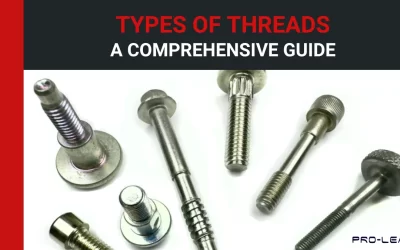
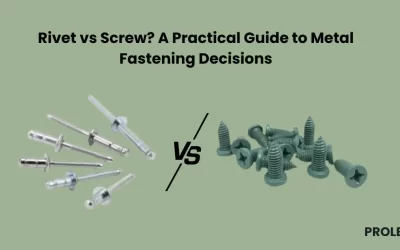
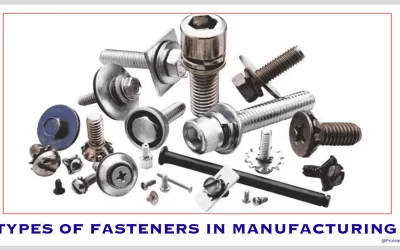
0 Comments